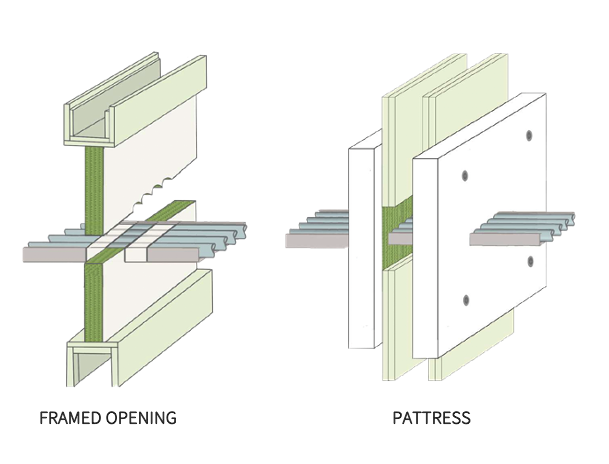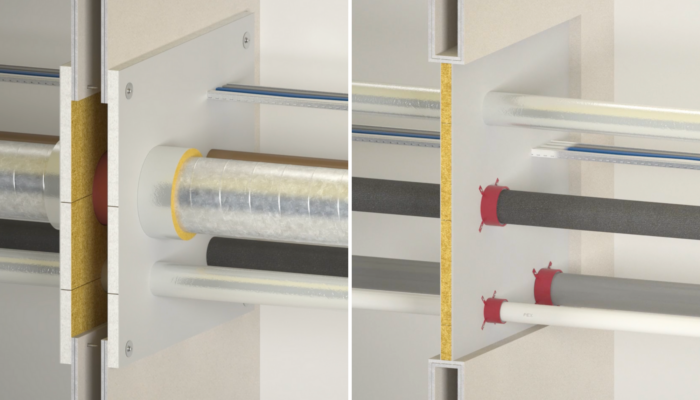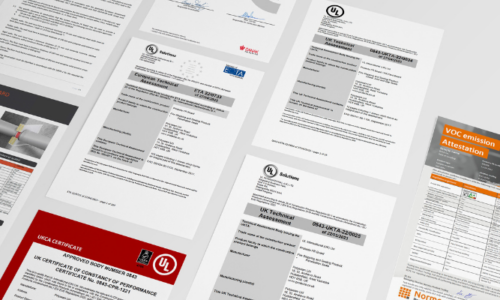Exploring Fire-Rated Wall Openings: Framed Out vs. Pattress Fixing
PATTRESS FIXING: THE NUTS AND BOLTS
The choice between framed-out openings and pattress fixing largely depends on several factors, including the type of wall substrate you're working with. Here's a breakdown of pattress fixing and its specific requirements:
Wall Substrate Considerations
- Plasterboard with Steel Studs: To secure fire-rated boards to this type of wall, use self-tapping steel screws and washers.
- Plasterboard with Timber Studs: For walls with timber studs, opt for screws suitable for wood along with washers.
- Cross Laminated Timber (CLT): Similar to timber studs, use screws suitable for wood and washers for CLT walls.
- Concrete: When dealing with concrete walls, employ concrete fixing bolts and washers for a secure installation.
HOW DOES PATTRESS FIXING WORK?
Pattress fixing involves fitting Protecta FR Board oversailing the aperture by 50mm around services of the construction, instead of inside the aperture. Then fix with ≥ 5x80mm screws and penny washers in corners and at ≤ 300mm centres, 25mm from edges then coat the edges of the Board with Protecta FR Coating.

HOW DOES LETTERBOX FIXING WORK?
Framed-out opening (letterbox opening) means forming an opening within the fire-rated wall and fitting Protecta FR Board tightly within the aperture and different types of service penetrations.
THE DECISION MAKING PROCESS
The choice between framed-out openings and pattress fixing isn't arbitrary. It's influenced by several factors:
Test Evidence: The available test evidence plays a significant role in determining the preferred installation method. Compliance with fire safety standards is paramount, and you should choose the method that aligns with these standards.
Fire Rating: In some cases, the desired fire rating may be achieved more effectively with a pattress application. It's crucial to consider the required fire resistance when making your choice.
Surface Condition: If the aperture surface is uneven, a pattress application might be preferred, as it offers more flexibility in accommodating irregularities.
PERSONAL PREFERENCE AND MATERIAL EFFICIENCY
In certain situations, either method could be suitable. In such cases, the decision often comes down to personal preference and efficiency:
Pattress Fixing: Some prefer this method because it eliminates the need to cut the fire batt to precisely match the size of the aperture. It can also require less material and no additional mechanical fixings, making it a convenient option.
Framed Out Opening: On the other hand, framed-out openings provide a structured framework for the FR Board, ensuring a precise fit. This method may be favoured when the wall opening dimensions are consistent and material efficiency is less critical.
CONCLUSION: PRIORITISE TEST EVIDENCE
When it comes to passive fire protection, making the right choice between framed-out openings and pattress fixing is crucial. Ultimately, your decision should be driven by test evidence, compliance with fire safety standards, and the specific needs of your project. Remember, the key to effective fire protection is to ensure that the solution you choose has a solid foundation in test evidence, ensuring the safety and integrity of your structure for years to come.
For more details and technical support please get in touch with our Technical team at technical@polyseam.com



